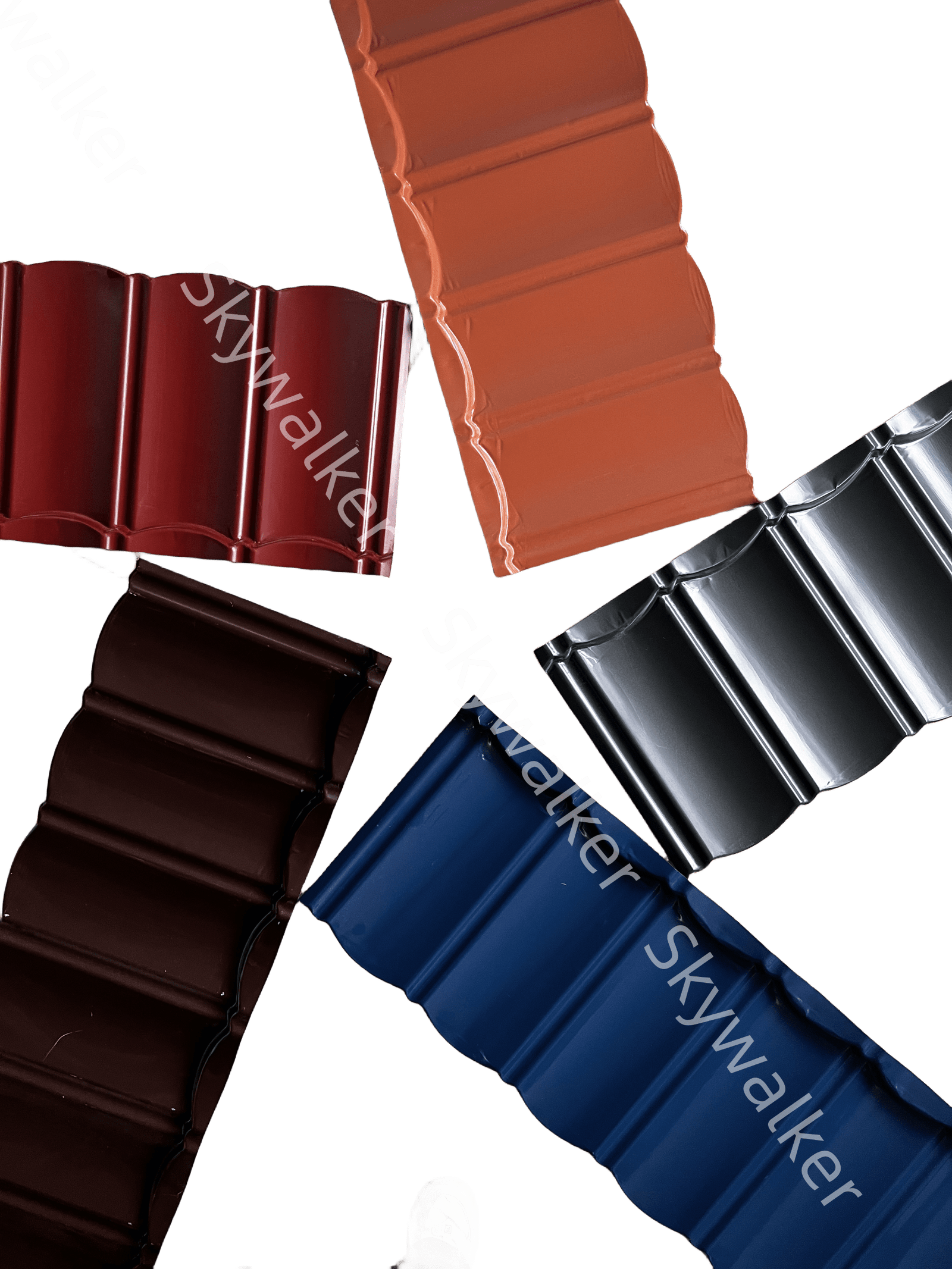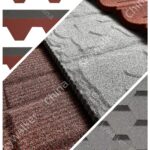History of Roof Tiles
From the oracle bone inscriptions, it is known that the roof ridges of more than 3,000 years ago had towering decorative or structural elements, but no actual physical ceramic tiles have been found in excavations.

The use of tiles began in the early Western Zhou Dynasty, and in 1976, a group of large building sites was discovered in Shanxi, and a small number of tiles were found in the roof piles, which, according to radiocarbon measurements made on a charred wooden pillar, were dated to the early Western Zhou Dynasty, around 1000 B.C.
As early as the North and South Dynasties, China has been using glazed tiles as decorations on buildings, and they have been widely used since the Song Dynasty(960-1279 A.D.)

The Temple of Hera, built in Olympia, Greece, in 640 B.C., is the oldest building with roof tiles, which were fired with clay. Tile-firing technology soon spread throughout Europe and Asia. The Romans were the first to use a mixture of sandstone and limestone to make tiles, and it was only in the 12th century that clay slate was commonly used.

Over time, people began using fired terra cotta tiles as an alternative to clay tiles. Terra cotta tiles are usually stronger and more durable than clay tiles and perform better at waterproofing.
With the advent of industrialization, people started using different materials to make roof tiles. For example, concrete tiles became a common choice, offering greater durability and waterproofing. In addition, newer materials such as metal tiles, polymer tiles and composite tiles began to be widely used.
In modern architecture, the design and material choices of roof tiles have become more diverse. People can choose various shapes, colors and materials of roof tiles to meet different architectural needs and personal preferences. At the same time, some new technologies have been applied to the manufacture of roof tiles, such as solar tiles, which can convert solar energy into electricity.

Influences
The application of modern roof tiles in different regions are mainly influenced by the following factors
Climatic conditions
Climatic conditions are critical to the choice of roof tiles. In hot regions, people may prefer shingle materials with insulating and heat-resistant properties. In colder regions, cold resistance and insulation properties may be more important considerations. Thus, the climatic conditions of different regions can influence the choice of roof tile application.
Material Availability and Cost
The availability and cost of roof tile materials may also vary from region to region. Certain shingle materials may be more readily available and reasonably priced in some regions, and therefore more common there. In other regions, other types of roof tiles may be preferred due to supply chain or economic factors.
Culture and tradition
Culture and tradition have a profound effect on architecture and design. In some regions, people may be more inclined to retain traditional architectural styles and material choices, and therefore choose traditional roof tile types. In other areas, modernized architectural styles and materials may be more popular. Therefore, culture and tradition may also have an impact on the choice of roof tile application.
Roof tile applications vary
Based on the above factors, the application of roof tiles varies from country to country and region to region.
Spanish and Italian Mediterranean Style Architecture
Common roof tiles in these regions are wavy tiles such as red ceramic tiles from Spain and ceramic tiles from Traldona, Italy. These tile materials complement Mediterranean-style architecture, creating a look full of tradition and warmth
Asian countries
Traditional roof tiles are represented by glazed tiles (also known as glazed tiles), which are tiles made of ceramic material. These tile materials are beautiful and durable and are commonly used in traditional buildings such as temples in China and Japanese etc.
In India, roof tiles fall into two main categories: pitched and flat tiles. Beveled tiles are usually made of clay and are shaped like small rectangular pieces and are commonly used in traditional buildings. Flat tiles are usually made of cement, ceramic or metal and are used in modern buildings.
Scandinavian countries
In Scandinavian countries, metal roof tiles are a common choice, especially galvanized steel tiles and copper tiles. These tile materials are able to withstand cold and wet weather conditions while providing excellent durability and waterproofing.
Africa area
The application of roof tiles in various countries and regions of Africa is still influenced by local climatic, cultural and economic conditions. Some regions may prefer traditional roofing material such as the sub-Saharan Sahara desert region, common materials include mud tiles and thatch. These materials provide insulation and protect the building from heat and dust.
Metal roof sheets and asphalt shingles are getting more and more popular in many countries in Africa, especially in urban areas. It is suitable for residential, commercial and industrial buildings.
The US and Australia
Asphalt shingles are very common in North America and Australia because they are affordable, durable and easy to install. Modern style buildings are often constructed with metal shingles, asphalt shingles, or quartz shingles. These shingle materials harmonize with the clean lines and modern materials of contemporary architecture to create a modern, sleek look.
Conclusion
The use of metal roof tiles and asphalt shingles in modern construction is really growing, both in residential and commercial buildings, they provides a diverse range of options to meet architects’ and owners’ requirements for appearance, performance and sustainability. Here in Skywalker China, we manufacture those particular tile types with extensive experience, Contact SKW for further information, we are at your service 24 hours a day.




